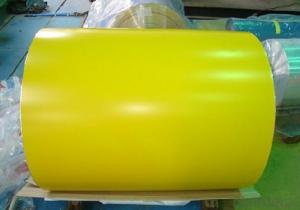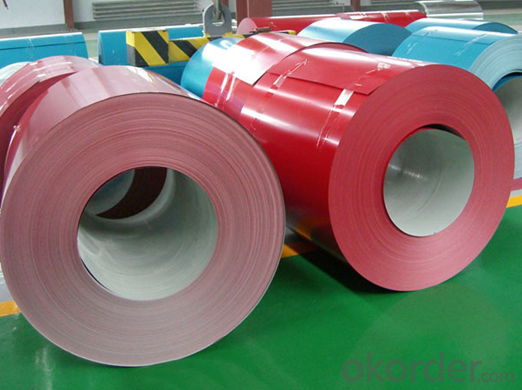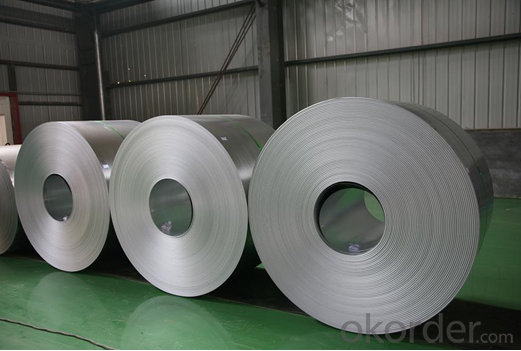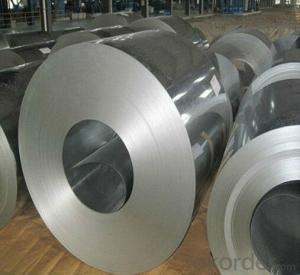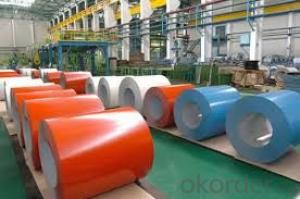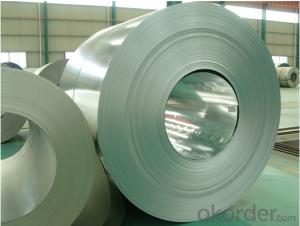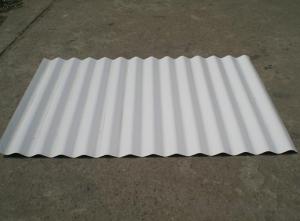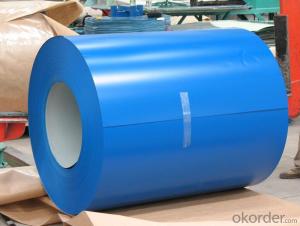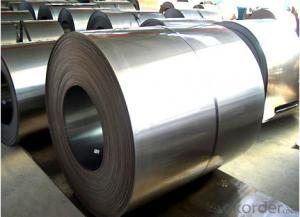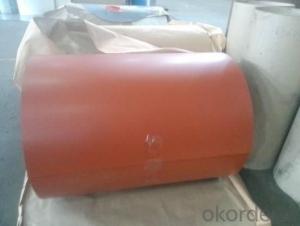Pre-painted Galvanized Steel Coil Thinkness 1.3mm Width 1200mm
- Loading Port:
- China main port
- Payment Terms:
- TT OR LC
- Min Order Qty:
- 50 m.t.
- Supply Capability:
- 1000000 m.t./month
OKorder Service Pledge
OKorder Financial Service
You Might Also Like
Description:
EN 10147 Structure hot dip galvanized steel coil S250GD+Z, S350GD+Z (SGC340, SS275, SS340)/Custom Deep drawing hot dip galvanized steel coil DX52D+Z, DX53D+Z, S
Galvanized steel is taken cold rolled steel as the base metal, after continuous hot dip galvanizing process, the product produced is an excellent resistance to atmospheric corrosion coating steel coil, as the steel gets coated in layers of zinc and rust won't attach this protective metal; Cold rolled plate by hot-dip galvanizing may extend the service life of 15-20 years.
For countless outdoor, marine, or industrial applications, galvanized steel is an essential fabrication component. Hot dip galvanized steel is used in applications where steel may be exposed to weather, but where stainless steel is too expensive.
Application:
Construction
Manufacture anticorrosion, industrial and civil architecture roof boarding, roof grille
Light industries
Home appliance's case, civil chimney, kitchen utensils
Auto industry
Corrosion resistant parts of cars
Agriculture
Food storage, meat and aquatic products' freezing and processing equipment
Commerce
Equipments to store and transport materials, and packing implements
NAME | PPGI | GALVANIZED | GALVALUME/ALUZINC |
CERTIFICATE | ISO9001:2008 | ||
| EN10142 | ASTM A653 | ASTM A792 |
| CGCC | SS GRADE33-80 | GRADE33-80 |
MODEL NO | 0.16MM-1.5MM*1250MM OR UNDER | (0.12-1.5)*1250MM OR UNDER | 0.16MM-1.5MM*1250MM OR UNDER |
| Steel coil | Steel coil | Steel coil |
| Hot rolled-cold rolled | Hot rolled-cold rolled | Hot rolled-cold rolled |
SURFACE | Mini/regular/big/zero spangle, | Mini/regular/big/zero spangle, | |
APPLICATION | Structural use ,roofing, commercial use, household appliance, industry, family | ||
SPECIAL | Wear resistant steel, high- strength - steel plate | ||
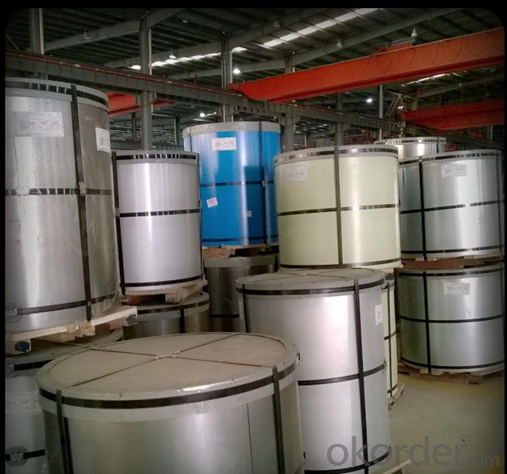
FAQ
1. Are the products tested before shipping?
Yes, all of our PPGI and GI was qualified before shipping. We test every batch every day.
- Q: also what are the factors of location of these steel plants
- iron ore comes from mines in North America, but also abroad. I think the majority of ore comes from mines in Michigan, Minnesota, and Canada. reason that steel plants are near great lakes is because the car industry is there... they are the major consumer of steel...
- Q: How are steel coils used in the production of agricultural irrigation systems?
- Steel coils are used in the production of agricultural irrigation systems to create the pipes and tubing that transport water to crops. These coils are formed into various designs to meet specific irrigation needs, ensuring efficient and reliable water distribution for optimal crop growth.
- Q: i wanna know all the similarities between iron and steel
- Steel is an iron alloy which contains between 0.2 percent and 2.0% carbon. Modern steels nearly always contain 0.5% - 1% manganese as well. (though technically the manganese doesn't need to be present for it to be considered steel.) Above 2.1% is usually called cast iron. Cast iron is brittle, but has a lower melting point than steel. Below 0.2% percent carbon is considered commercially pure iron. Pure iron is soft and malleable like copper, but it has low strength. Adding small amounts of carbon increases it's strength dramatically.
- Q: How are steel coils processed for heat treatment?
- Steel coils are typically processed for heat treatment by first being uncoiled and then cleaned to remove any dirt or scale. The coils are then heated to a specific temperature, which is determined based on the desired properties of the steel. This temperature is maintained for a specific period of time to allow for the desired transformation of the steel's microstructure. After the heat treatment process is complete, the coils are cooled either slowly or rapidly, depending on the desired properties. This allows the steel to be hardened or softened as required. Finally, the coils are recoiled and prepared for further processing or shipment.
- Q: How are steel coils processed for edge conditioning or slitting?
- Steel coils are processed for edge conditioning or slitting through a series of mechanical operations. The process involves unwinding the steel coil, leveling it to remove any deformities, and then passing it through a slitting machine to cut it into narrower strips. For edge conditioning, the strips are further processed to remove burrs and create smooth, precise edges. Overall, these processes ensure that steel coils are transformed into accurately sized and finished products suitable for various industrial applications.
- Q: What are the common handling defects in steel coils?
- During the transportation and storage of steel coils, various handling defects can arise, impacting the coils' quality and integrity and potentially leading to future problems. Some of the most frequently encountered handling defects in steel coils are as follows: 1. Damage to the edges: This defect occurs when the coil's edges are bumped or scraped, resulting in dents, scratches, or tears. Such damage weakens the coil's structural integrity, making it more susceptible to further harm. 2. Core damage: The core of a steel coil plays a crucial role in maintaining its shape and stability. However, mishandling can crush or deform the core, leading to coil collapse or distortion. 3. Coil slippage: Inadequate strapping or stacking of coils can cause them to shift or slide during transportation. This can result in coil slippage, causing misalignment, damage to the outer layers, or even complete coil failure. 4. Abrasion: Steel coils can experience abrasion if they come into contact with rough surfaces or other objects during handling. This can lead to the wearing off of the coil's protective coating or paint, exposing the steel to potential corrosion. 5. Moisture damage: Steel coils are susceptible to moisture damage, particularly if they are not properly sealed or protected. Exposure to moisture can lead to rust formation, compromising the coil's structural integrity and overall quality. 6. Overloading: Exceeding weight limits and improper stacking of steel coils in trucks or storage areas can exert excessive pressure and stress on the coils, resulting in deformation, bending, or even coil collapse. Adhering to weight limits and proper stacking procedures is crucial to prevent overloading. 7. Improper lifting: When lifting steel coils, it is important to use suitable lifting equipment and techniques. Failure to do so can cause coil damage, such as distortion or bending, and can also pose risks of injury to workers. To mitigate these handling defects, it is vital to adhere to proper handling and storage procedures for steel coils. This includes using appropriate lifting equipment, securing coils during transportation, avoiding overloading, and ensuring adequate protection against moisture and abrasion. Regular inspections and maintenance are also important for identifying and addressing any potential defects or issues before they worsen.
- Q: How are steel coils used in the manufacturing of suspension springs?
- Steel coils are used in the manufacturing of suspension springs by being tightly wound and then shaped into a helical or spiral form. These coils provide the necessary flexibility and strength required to absorb and distribute the weight and force exerted on the suspension system, allowing for a smooth and stable ride.
- Q: What are the quality standards for steel coil production?
- The quality standards for steel coil production typically include factors such as dimensional accuracy, surface finish, mechanical properties, chemical composition, and adherence to industry-specific standards and specifications. These standards ensure that the steel coils meet the required strength, durability, and performance criteria, and are suitable for various applications in industries like automotive, construction, and manufacturing.
- Q: Will hot dip galvanizing affect the properties of the steel
- depends on what your are dipping...i.e what its composition and properties were, was it a spring steel prior?
- Q: What are the different types of steel coil surface treatment methods?
- There are several different types of steel coil surface treatment methods that are commonly used in various industries. These methods are employed to enhance the appearance, durability, and performance of steel coils. Some of the common types of steel coil surface treatment methods include: 1. Hot-dip galvanizing: This process involves immersing the steel coil in a bath of molten zinc. The zinc coating provides excellent corrosion resistance and protects the steel from rusting. 2. Electro-galvanizing: In this method, a thin layer of zinc is electroplated onto the surface of the steel coil. It offers similar corrosion protection as hot-dip galvanizing but with a thinner coating. 3. Cold-rolled steel coil: This process involves passing the steel coil through a series of rollers at room temperature. It results in a smooth and polished surface finish, which is ideal for applications that require a high-quality appearance. 4. Pre-painted steel coil: Also known as color-coated steel coil, this treatment method involves applying a layer of paint or coating onto the steel surface. It provides an attractive appearance and additional protection against corrosion. 5. Phosphating: This treatment method involves applying a phosphate coating onto the steel surface. Phosphating improves the adhesion of subsequent coatings, such as paint or powder coating, and provides corrosion resistance. 6. Chromate conversion coating: This method involves applying a conversion coating, typically using chromium compounds, onto the steel coil surface. It enhances the paint adhesion and provides corrosion resistance. 7. Passivation: Passivation is a chemical treatment that is used to remove iron oxide and other contaminants from the steel surface. It improves the corrosion resistance of the steel coil. 8. Oiling: Oiling is a common surface treatment method that involves applying a thin layer of oil onto the steel coil surface. It helps to prevent corrosion during storage and transportation. These are some of the commonly used steel coil surface treatment methods. The choice of treatment method depends on the specific requirements of the application, such as corrosion resistance, appearance, and performance.
Send your message to us
Pre-painted Galvanized Steel Coil Thinkness 1.3mm Width 1200mm
- Loading Port:
- China main port
- Payment Terms:
- TT OR LC
- Min Order Qty:
- 50 m.t.
- Supply Capability:
- 1000000 m.t./month
OKorder Service Pledge
OKorder Financial Service
Similar products
Hot products
Hot Searches
Related keywords
